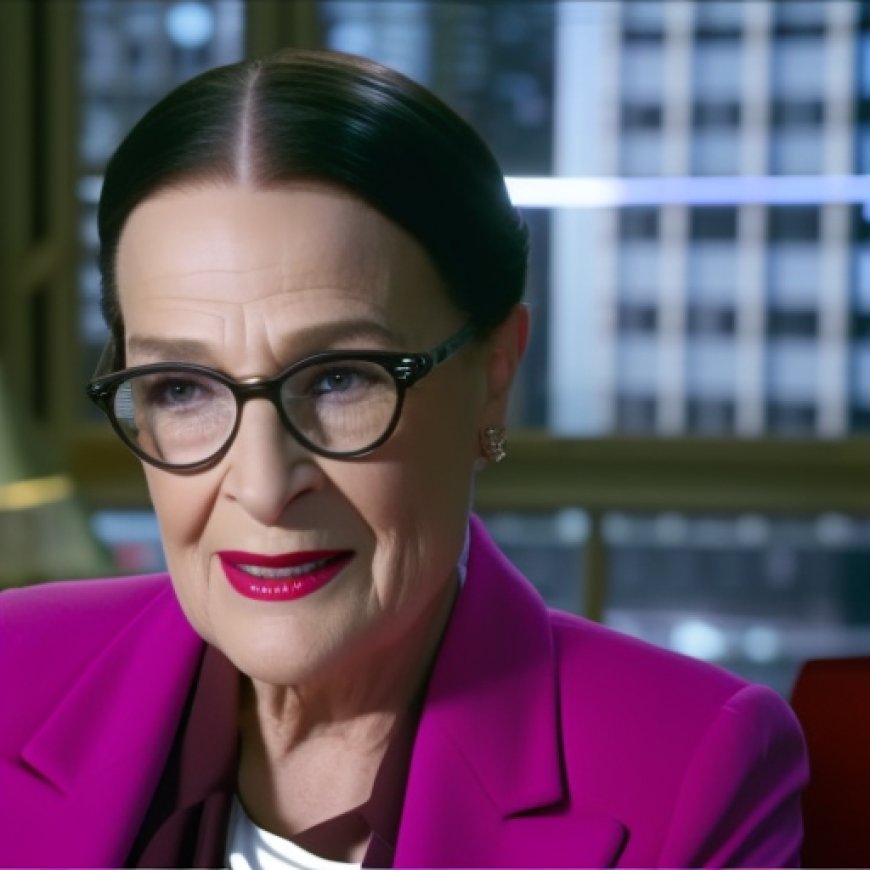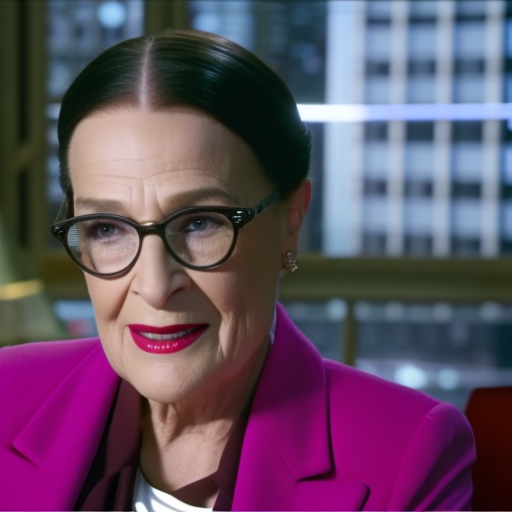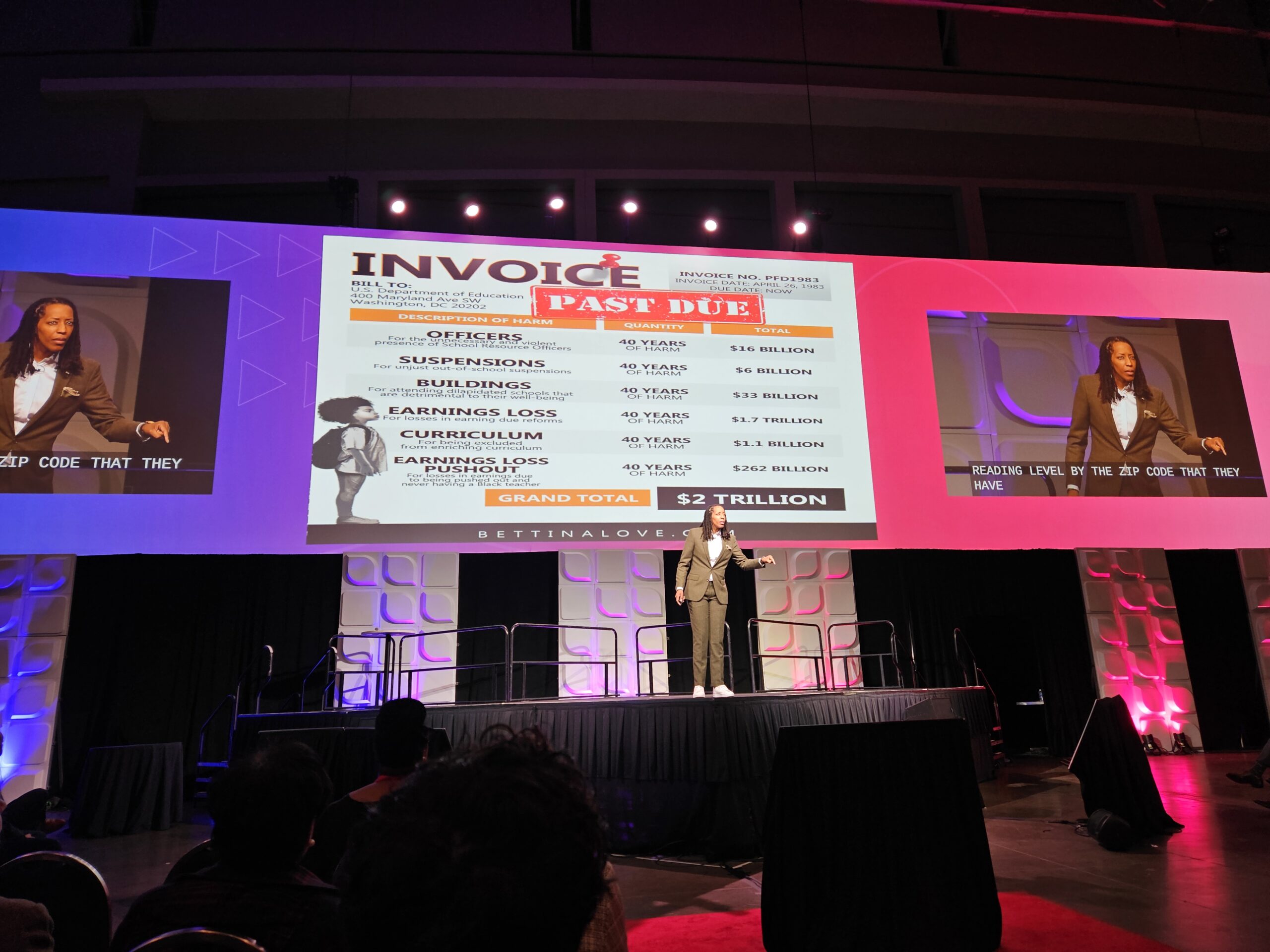Bettina Love: “If we can engineer inequality, we can engineer equality” – SmartBrief
Bettina Love: “If we can engineer inequality, we can engineer equality” SmartBrief


ASCD 2024: Keynote Address by Bettina Love

Introduction
ASCD 2024 commenced with a full day of programming, starting with a keynote address by activist and professor Bettina Love. Educators gathered in the main hall to hear Love discuss the necessary reforms in education, the limitations of diversity, equity, and inclusion (DEI), and how schools can contribute to achieving equality.
The Greatest Generation Ever
According to Love, individuals born in the 80s and 90s might be considered the greatest generation ever. Love referred to this generation as the post-civil rights generation, the hip hop generation, and the dream generation. They are the generation that their parents and grandparents fought for. However, the 80s and 90s also brought about significant changes and challenges for Black communities. Crime reform and education reform intersected, resulting in programs like D.A.R.E and No Child Left Behind. Additionally, new language and labels emerged, such as crack babies, super predators, and thugs, which negatively impacted young Black individuals.
Curriculum and Representation
Love emphasized the importance of students seeing themselves reflected in their learning content. This representation reinforces their identity and potential. Love stated that curriculum communicates to young people who is important and who has contributed to society. When individuals are erased from the curriculum, their experiences and contributions are also erased. Educators must make an effort to understand their students’ culture and history to create an inclusive learning environment.
Integration and Antiracism
Love highlighted that antiracism goes beyond avoiding racial slurs. It encompasses daily decisions, such as where one lives and the books one brings into their home. Love shared the story of Ruby Bridges, the first Black child to attend a formerly white-only school in Louisiana. Understanding the sacrifices made by families like the Bridges is crucial in supporting antiracism goals.
The Lie of DEI
Love cautioned against placing excessive faith in diversity, equity, and inclusion efforts. She argued that many of these programs lack sufficient resources and support. Love proposed reparations as a more effective solution. She called on educators to become allies in the antiracism cause and use their privilege to bring about necessary change.
Changing the System
Love emphasized that achieving real justice requires changing the structure of the system. She highlighted that the current system is designed to create inequality, as seen in policies related to poverty and inadequate education funding. Love urged educators to recognize that if inequality can be engineered, so can equality.
Stay the Course
Love acknowledged that the journey towards equality is long, but emphasized the relentless spirit of the Black community in this fight. Black individuals do not give up; they organize, strategize, march, protest, and keep fighting for their dreams. Love urged educators to see and believe in the radical resilience of the Black community and recognize how their fight for equality benefits everyone.
Kanoe Namahoe is the editorial director of SmartBrief Education & Business Services. Reach her at [email protected]
SDGs, Targets, and Indicators
| SDGs | Targets | Indicators |
|---|---|---|
| SDG 4: Quality Education | 4.7: By 2030, ensure that all learners acquire the knowledge and skills needed to promote sustainable development, including among others through education for sustainable development and sustainable lifestyles, human rights, gender equality, promotion of a culture of peace and non-violence, global citizenship and appreciation of cultural diversity and of culture’s contribution to sustainable development | Indicator not mentioned in the article |
| SDG 10: Reduced Inequalities | 10.2: By 2030, empower and promote the social, economic and political inclusion of all, irrespective of age, sex, disability, race, ethnicity, origin, religion or economic or other status | Indicator not mentioned in the article |
| SDG 16: Peace, Justice and Strong Institutions | 16.7: Ensure responsive, inclusive, participatory and representative decision-making at all levels | Indicator not mentioned in the article |
1. Which SDGs are addressed or connected to the issues highlighted in the article?
- SDG 4: Quality Education
- SDG 10: Reduced Inequalities
- SDG 16: Peace, Justice and Strong Institutions
The issues highlighted in the article relate to the need for quality education that promotes sustainable development, addresses inequalities, and fosters inclusive decision-making.
2. What specific targets under those SDGs can be identified based on the article’s content?
- SDG 4.7: By 2030, ensure that all learners acquire the knowledge and skills needed to promote sustainable development, including among others through education for sustainable development and sustainable lifestyles, human rights, gender equality, promotion of a culture of peace and non-violence, global citizenship and appreciation of cultural diversity and of culture’s contribution to sustainable development.
- SDG 10.2: By 2030, empower and promote the social, economic and political inclusion of all, irrespective of age, sex, disability, race, ethnicity, origin, religion or economic or other status.
- SDG 16.7: Ensure responsive, inclusive, participatory and representative decision-making at all levels.
The article emphasizes the importance of education for sustainable development, promoting inclusivity and equality, and fostering participatory decision-making.
3. Are there any indicators mentioned or implied in the article that can be used to measure progress towards the identified targets?
No specific indicators are mentioned or implied in the article that can be used to measure progress towards the identified targets.
Behold! This splendid article springs forth from the wellspring of knowledge, shaped by a wondrous proprietary AI technology that delved into a vast ocean of data, illuminating the path towards the Sustainable Development Goals. Remember that all rights are reserved by SDG Investors LLC, empowering us to champion progress together.
Source: smartbrief.com

Join us, as fellow seekers of change, on a transformative journey at https://sdgtalks.ai/welcome, where you can become a member and actively contribute to shaping a brighter future.







